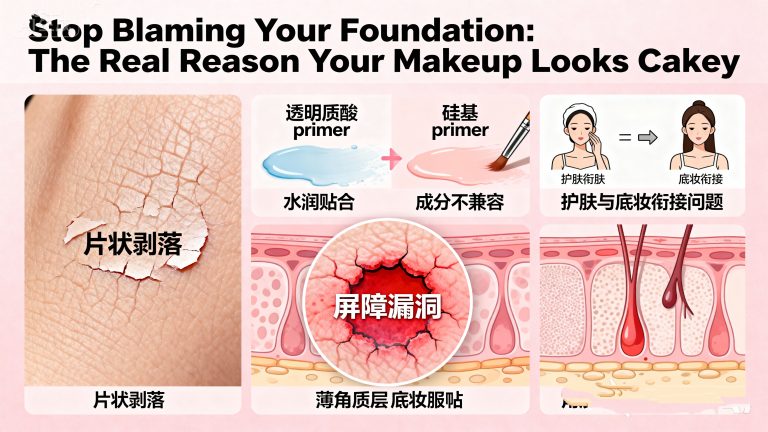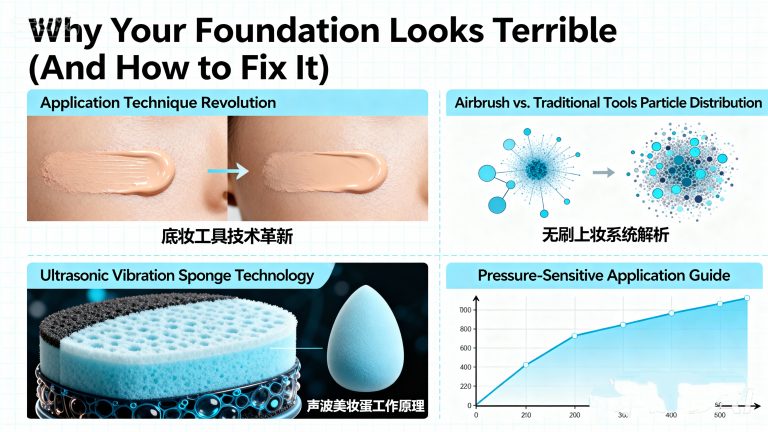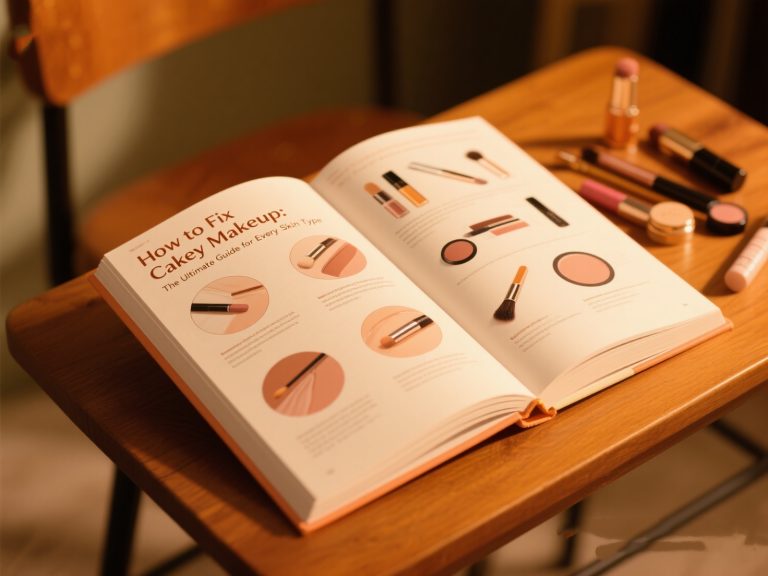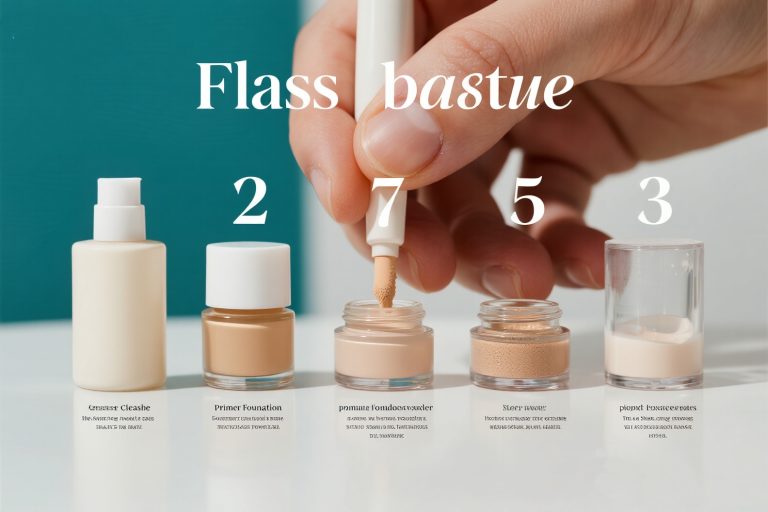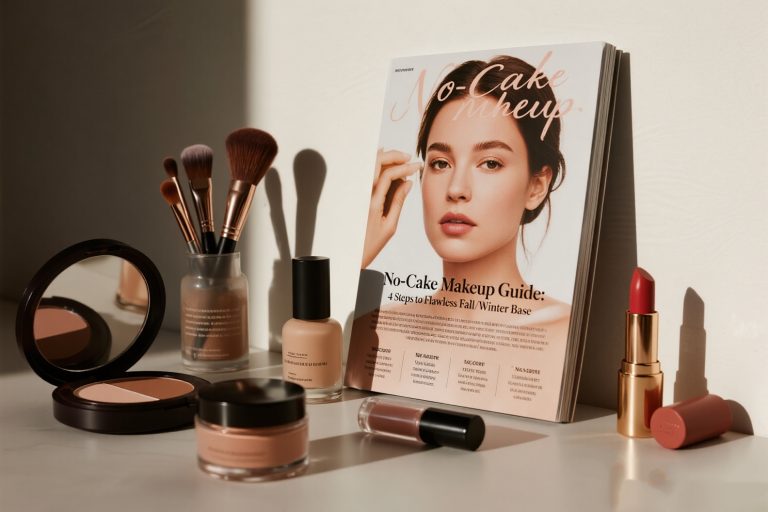Foundation Caking Making You Look 10 Years Older? Here’s How to Fix It
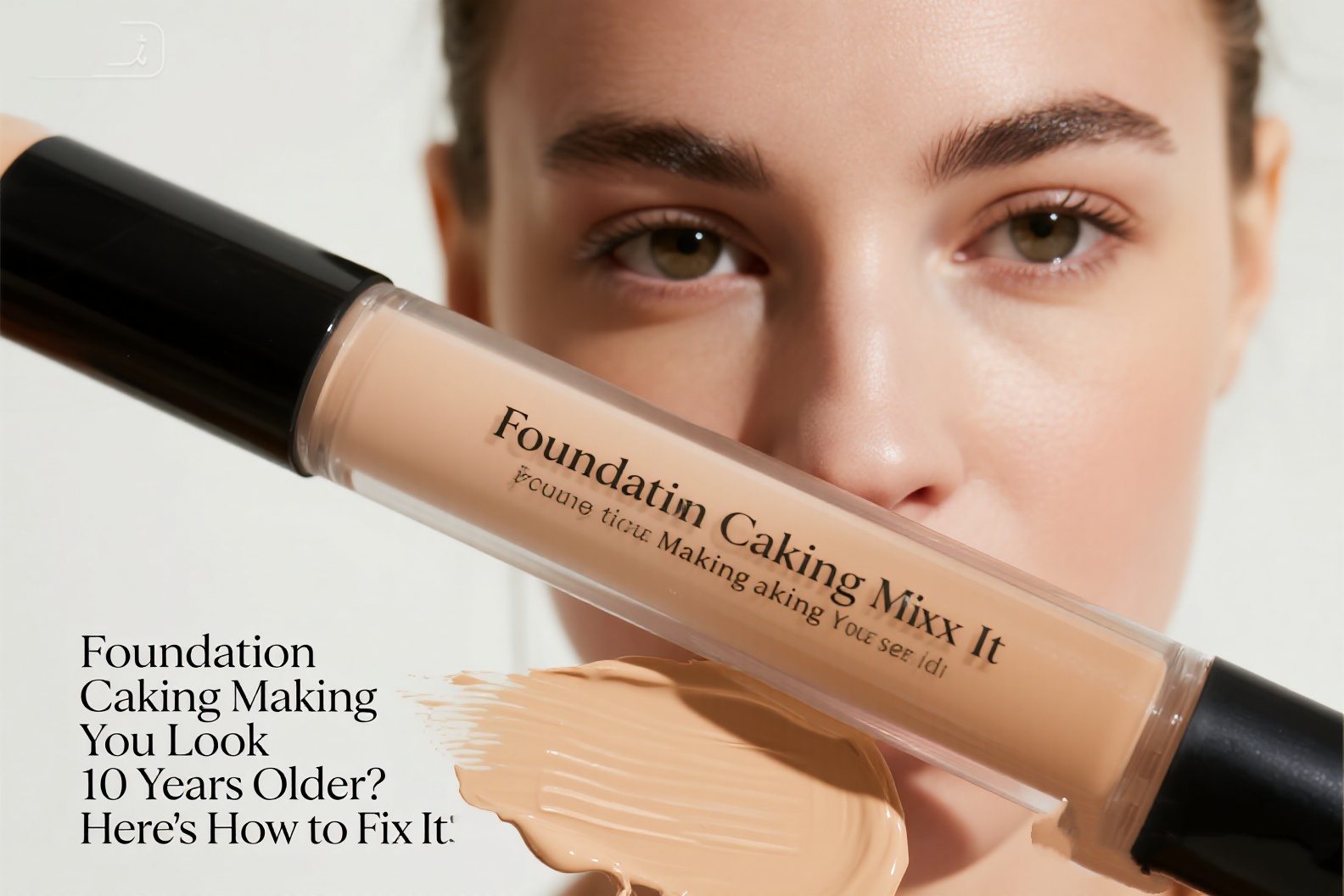
The Reality Check We All Need
Let’s be real here.
Foundation caking isn’t just a “bad makeup day” thing anymore. It’s literally aging us faster than our quarter-life crises.
You know that moment when you check your mirror mid-day and your foundation looks like cracked desert earth? Yeah, that’s what we’re fixing today.
Even A-list celebrities with entire glam squads can’t escape this disaster. Remember those paparazzi shots of stars looking rough? Same energy.
What Exactly Is Foundation Caking?
Foundation caking happens when your makeup literally gets stuck in fine lines, laugh lines, and under-eye creases.
Instead of smooth, Instagram-worthy skin, you get these obvious powder lines that scream “I don’t know how to do makeup.”
Here’s the brutal truth: It’s usually because your skin is dehydrated AF.
When your skin lacks moisture and oil, foundation can’t blend properly. It just sits there, clinging to every imperfection like an unwanted ex.
Don’t Confuse Caking with Cakey Foundation
These are two different disasters:
Caking: Foundation settling into lines and creases Cakey: Foundation sitting on top of skin like a mask
Both suck. But today we’re tackling caking specifically.
The Real Causes (And Why Your Current Routine Isn’t Working)
Problem 1: Your Skin Is Thirsty
Winter air is basically a vampire for moisture.
Your skin gets stripped of natural oils and water. Foundation needs that moisture to blend seamlessly.
Problem 2: You’re Over-Exfoliating
All those acids and scrubs you’re obsessed with? They might be making things worse.
Compromised skin barrier = flaky, rough texture = foundation nightmare.
Problem 3: Wrong Product Combinations
Some ingredients hate each other more than reality TV stars.
Mixing the wrong products creates a chemical cocktail that separates and pills.
The Game-Changing Solutions That Actually Work
Step 1: Fix Your Skincare Foundation
Morning skincare needs to be strategic, not just routine.
Use a hydrating serum first. Let it absorb completely.
Follow with a moisturizer that contains:
- Hyaluronic acid
- Ceramides
- Glycerin
Pro tip: Apply moisturizer in thin layers. Wait 2-3 minutes between each layer.
Your skin should feel plump and bouncy, not greasy or tight.
Step 2: Master the Primer Game
Primers aren’t optional anymore. They’re survival tools.
Choose based on your specific issues:
For dry skin: Look for primers with:
- Squalane
- Hyaluronic acid
- Light oils
For combination skin: Use different primers on different zones.
Application rule: Less is more. A thin, even layer beats thick coverage every time.
Step 3: The Foundation Mixing Hack
This changes everything.
Before applying foundation, mix it with a drop of:
- Facial oil (rosehip or jojoba work best)
- Hyaluronic acid serum
- Glycerin (seriously underrated)
The ratio: Start with 1:10 (one drop of additive to ten drops of foundation).
Test the mixture on your hand first. You want foundation that spreads like butter, not water.
Step 4: Choose Your Foundation Wisely
Not all foundations are created equal.
For caking-prone skin, avoid:
- Matte finish foundations
- Powder foundations
- Anything labeled “long-wearing” or “transfer-proof”
Look for:
- Luminous or satin finishes
- Hydrating formulas
- Buildable coverage options
Real talk: Expensive doesn’t always mean better. Some drugstore options outperform luxury brands.
Step 5: Application Technique That Actually Works
Forget everything you learned from beauty gurus.
Use a damp beauty sponge. Not wet, not dry. Damp.
The pressing technique:
- Apply foundation with gentle pressing motions
- Don’t drag or swipe
- Build coverage gradually
- Press firmly to push product into skin
Wayne Goss was right: You need to use more pressure than you think.
The Setting Mistake Everyone Makes
Stop using powder if you’re prone to caking.
Powder contains silica and other oil-absorbing ingredients. For already-dry skin, this is overkill.
Better option: Setting spray with humectants.
Look for sprays containing:
- Glycerin
- Sodium hyaluronate
- Propylene glycol
Application distance: Hold spray 6-8 inches from face. Closer than that and you’ll disturb your makeup.
Advanced Solutions for Stubborn Cases
The Skin Prep Intensive
When regular moisturizer isn’t enough:
- Use a hydrating mask the night before
- Apply a facial oil 30 minutes before makeup
- Use a humidifier while getting ready
- Consider a hydrating primer with peptides
The Emergency Mid-Day Fix
When caking happens despite your best efforts:
- Lightly mist face with setting spray
- Gently press with clean beauty sponge
- Don’t add more product
- Blot excess moisture with tissue
The Lifestyle Factors You’re Ignoring
Your environment matters more than you think.
- Low humidity accelerates caking
- Heating systems dry out skin
- Air conditioning strips moisture
- Stress affects skin barrier function
Solutions:
- Invest in a good humidifier
- Drink more water (boring but necessary)
- Use overnight masks regularly
- Consider your medication side effects
Product Recommendations That Don’t Suck
Affordable Options That Work
Drugstore heroes:
- L’Oreal True Match for normal skin
- Maybelline Fit Me Dewy for dry skin
- Revlon ColorStay for combination skin
Mid-Range Wins
Worth the investment:
- Too Faced Born This Way
- Urban Decay Hydromaniac
- Rare Beauty Liquid Touch
Luxury That Delivers
When you want to splurge:
- Giorgio Armani Luminous Silk
- Charlotte Tilbury Airbrush Flawless
- Tom Ford Traceless Foundation
The Bottom Line
Foundation caking isn’t a character flaw. It’s a solvable problem.
Most people try to fix it with more makeup. That’s backwards thinking.
The real solution: Better skin prep, smarter product choices, improved technique.
Start with one change at a time. Don’t overhaul your entire routine overnight.
Test everything. What works for your favorite influencer might be terrible for your skin.
Be patient. Good makeup skills take practice, not magic.
Common Mistakes to Stop Making Right Now
Mistake 1: Skipping the Wait Time
Applying foundation immediately after moisturizer is asking for trouble.
Wait 5-10 minutes between skincare and makeup. Your skin needs time to absorb products.
Mistake 2: Using Too Much Product
More foundation doesn’t equal better coverage.
Start with less than you think you need. Build gradually.
Mistake 3: Wrong Tools for Your Foundation
Different formulas need different application methods.
- Liquid foundation: Damp beauty sponge or dense brush
- Cream foundation: Fingers or flat-top brush
- Tinted moisturizer: Fingers or large fluffy brush
Mistake 4: Ignoring Your Skin’s Daily Changes
Your skin isn’t the same every day.
Hormones, weather, sleep, and stress all affect how foundation performs.
Adjust your routine accordingly.
Final Reality Check
Perfect foundation doesn’t exist.
But foundation that works with your skin, your lifestyle, and your skill level? That’s achievable.
Stop chasing viral makeup trends. Start focusing on what actually works for your face.
Remember: The goal isn’t to look like someone else. It’s to look like the best version of yourself.
Now go practice. Your future self will thank you when you’re not constantly checking mirrors in horror.

